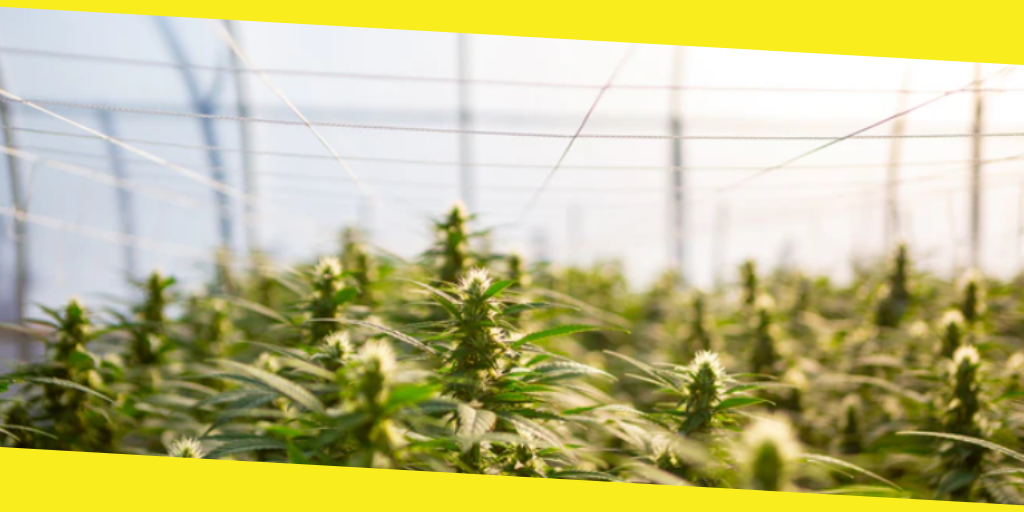In 2020 Hemp Farmers Continue Their Search for Flower-Storage Solutions
Hemp is a considerably robust and resilient plant. It is drought-resistant, pest-resistant, and grows fast…like a weed (pun intended). Yet when it comes to properly storing hemp, the challenges are very real.
The storage of hemp flowers is a growing concern for farmers who are having to adapt to the rapidly growing (and relatively new) demand for hemp crops. Without proper storage solutions, they stand to lose big on their hard-earned crops.

Next Green Wave
Producing a strong, healthy and genetically superior hemp crop is one thing. Storing it while maintaining its integrity, freshness, and quality is another. In many cases farmers simply are not equipped to handle new and unique challenges that storing hemp flower poses. In others, CBD companies have not invested into their own in-house solutions, giving organizations such as Next Green Wave a major advantage.
Companies NGW have brought the cultivation and nursery part of the business in-house, allowing them greater control and resulting in a premium product evaluated for quality assurance at every step of the process from seed to consumer.
By bringing the cultivation process and nursery part of the business in-house, the company has gained greater control, resulting in a premium product evaluated for quality assurance at every step of the process from seed to consumer.
A Lack of Information Driving Complications
For hemp, most of the knowledge and understanding of proper storage techniques revolve around that already known for storing grains, seeds, and fibers, and how to preserve each type for processing. What isn’t well-known is how to store hemp as a whole product, including the hemp flower itself. There isn’t a lot of published work devoted to techniques and best practices surrounding this particular need, nor on how long hemp can be stored for without risking damage to the product itself.
Storage solutions need to include protections against humidity, UV radiation, pests, and fluctuations in temperature. The elements aren’t so forgiving on a hemp plant once it has been harvested. Mold and potency loss in CBD compounds are some of the biggest concerns. Farmers and businesses new to hemp processing and storing could wind up gambling away a lot of money.
Long-term storage solutions are a top priority, especially when the hemp market is still subject to changes when the FDA decides on how they will regulate it.
Various Storage Techniques
There are two main methods for harvesting and storing hemp with the intention to extract CBD. On one side, some prefer to harvest the hemp flower by hand, maintaining a higher quality product before processing. But, it is faster and cheaper to harvest the entire plant and pack them into bales, like wheat and hay.
Hemp needs to be dried before storage, so if a processor decides to cut the whole plant, then they will need a large industrial dryer for capacity. Hand-picked hemp flowers need less space when drying and storing, but will require more care to avoid damaging CBD compounds.
Traditional farming operations may opt to store the dried hemp in straw or cotton sacks, allowing more air flow to keep the hemp dry.
New Dog, Old Tricks
Former tobacco farms also offer useful processing and storage insight for hemp farmers. At old tobacco barns, where tobacco leaves were tried in special rooms/units, hemp can be dried and stored with high efficiency. Tobacco plants take a lot more effort to fully dry and process, taking up to a week to dry completely.
Hemp plants can be dried in these same barns in three to five days. It doesn’t need to dry completely in order to harvest the hemp flowers for CBD. The floral material easily comes off the plant.
Storing bales of hemp plants after drying involves wrapping it in some type of protective film and keeping it in a dark and dry location. Wrapping it in plastic will help deal with temperature changes, humidity, and UV light. If everything is done correctly, bales of dried hemp can keep for 6-12 months.
Further processing of the bales into smaller pellets and ground material is required to store for longer periods of time. It’s possible to store hemp biomass for 18-24 months with the most controlled environments. As more research is invested in storing hemp, look for that number to increase over the next couple of years.
Hemp’s Greatest Enemies
All assortments of hemp, regardless of the end-product, are defenseless to mold if plants are not dried adequately and put away in dry, naturally controlled spaces.
Humidity is of the highest significance, in such a case that when you can’t control the dampness, that material absorbs it in the air and makes the likelihood for the advancement of mold that can deliver aflatoxins and ochratoxins.
Mold is the greatest issue as far as irritations and contaminants. Contingent upon how it’s handled, contaminants can ruin hemp quality across the board.
For most extractors (who use ethanol) any organic contaminants would get filtered out simultaneously. It’s not the same with cannabis since the bud is being ingested either through breathing in or through edibles. With CBD, you go through more processing and storing steps to get to the CBD extract.
Like the marijuana flower, the hemp blossom and biomass will break down after some time with a high-temperature change and bright light, causing the destruction of cannabinoids. That is the reason bales of hemp are covered in plastic with reflective coatings.
Cannabinoids will ordinarily reduce in potency by 1%-2% over a year when hemp is being stored in optimal settings. It’s necessary for suppliers to test for that when getting a shipment to guarantee they’re getting their product as advertised. Cannabinoids can even fluctuate in potency within the same harvest, depending on storage choices.
How Long is Too Long?
Utilizing newly dried hemp instead of storing it is perfect to keep the cannabinoid strength of the harvest. Storing for more than a year is usually where you run into trouble.
For the most part, when you take any plant and dry it down to a specific level of dampness, it will hold up if the environment is controlled. Drying it down to an extremely low level of 10% will dramatically increase its stability. Hemp that is being affected by humidity, UV damage, or mold will start to discolor and lose its texture.
Hemp should not have a strong odor, the terpene profile should smell pretty good. Anything that starts to smell dirty, funky, or faintly sweet is a red flag for mold. Experienced growers will notice distinct characteristics of smell and how they pertain to the profile of cannabinoids in a crop.
This is especially true when comparing hemp grown from developing countries and domestic crops from Canada and the United States.
Experienced hemp producers will grow a variety over the United States. As opposed to keeping it across the board northern regions, where you get one harvest a year and you need to develop enough every year, you can get up to three yields in the mainland United States. That bodes well for financial investments and keeps the crops rotating, so you don’t need large swathes of land to profit.
Recommended For You
www.Getmyoffer.capitalone.com – Enter Reservation Number and Access Code
Most Inside
Most Inside offers high-quality recommendations and valuable updates to enhance all aspects of your life, providing premium guidance and enriching experiences.




